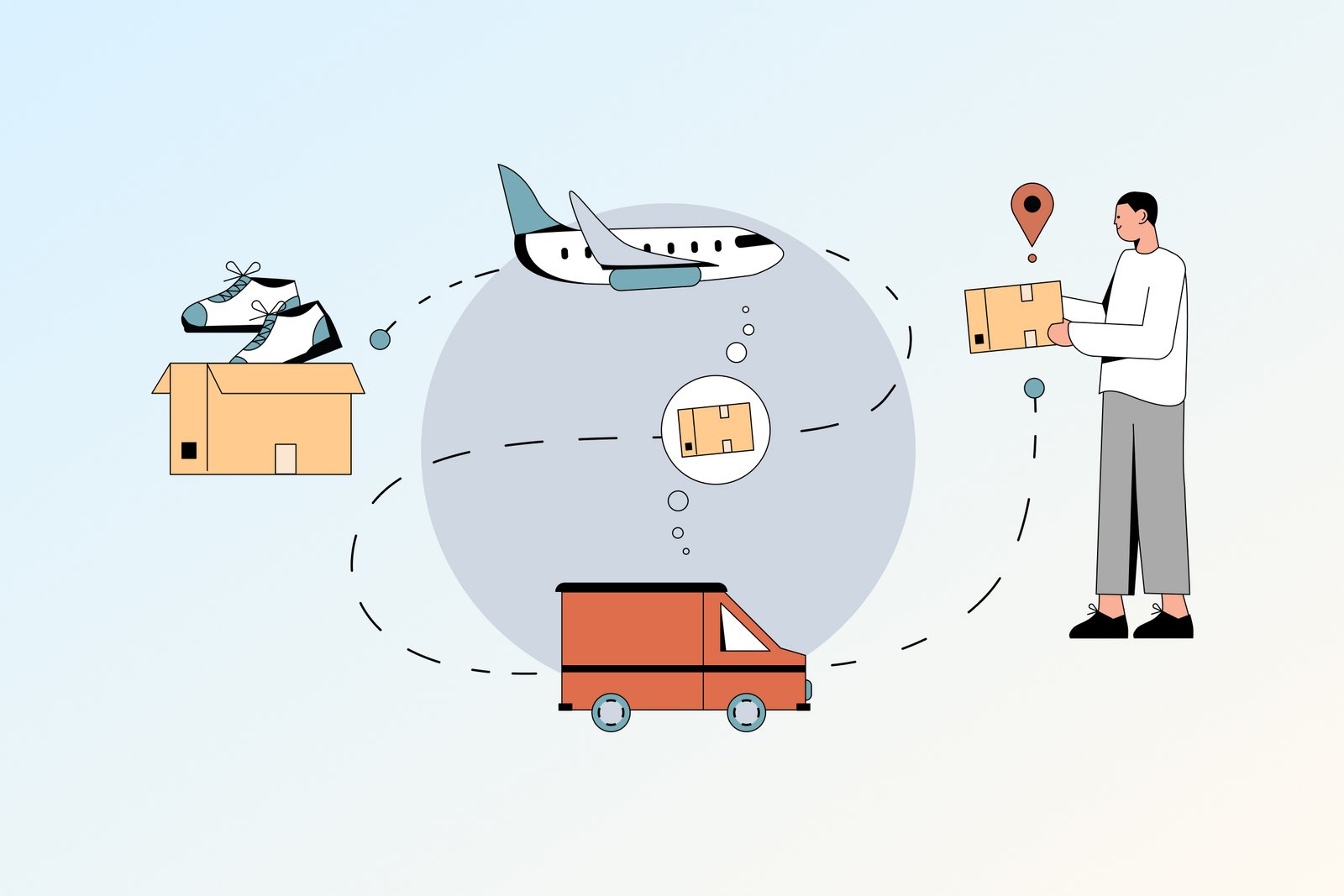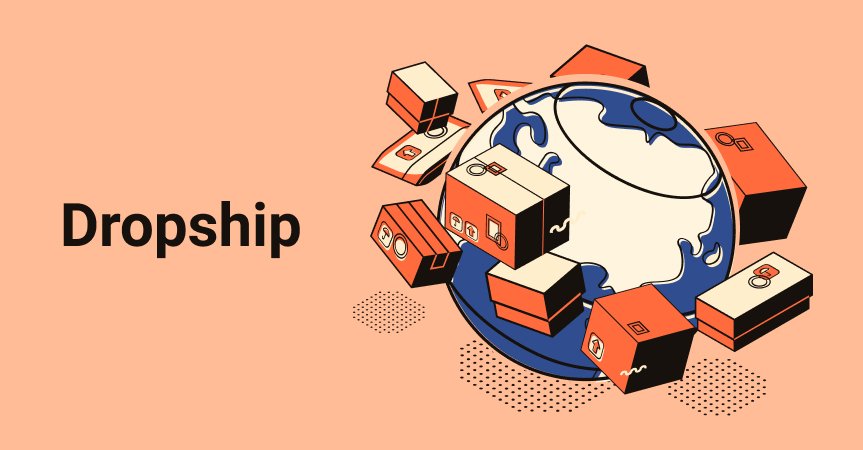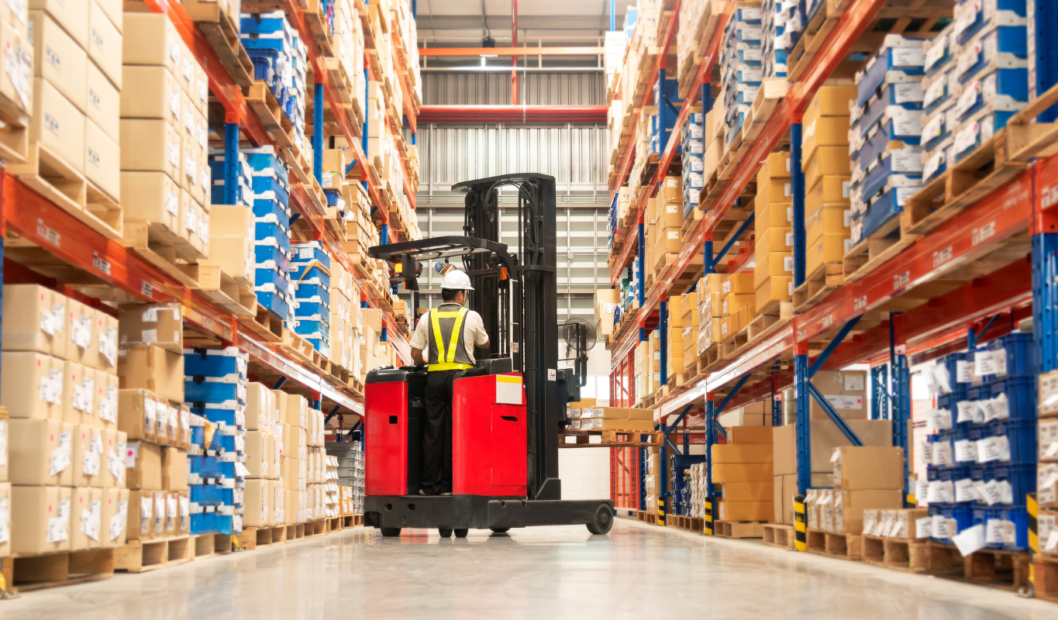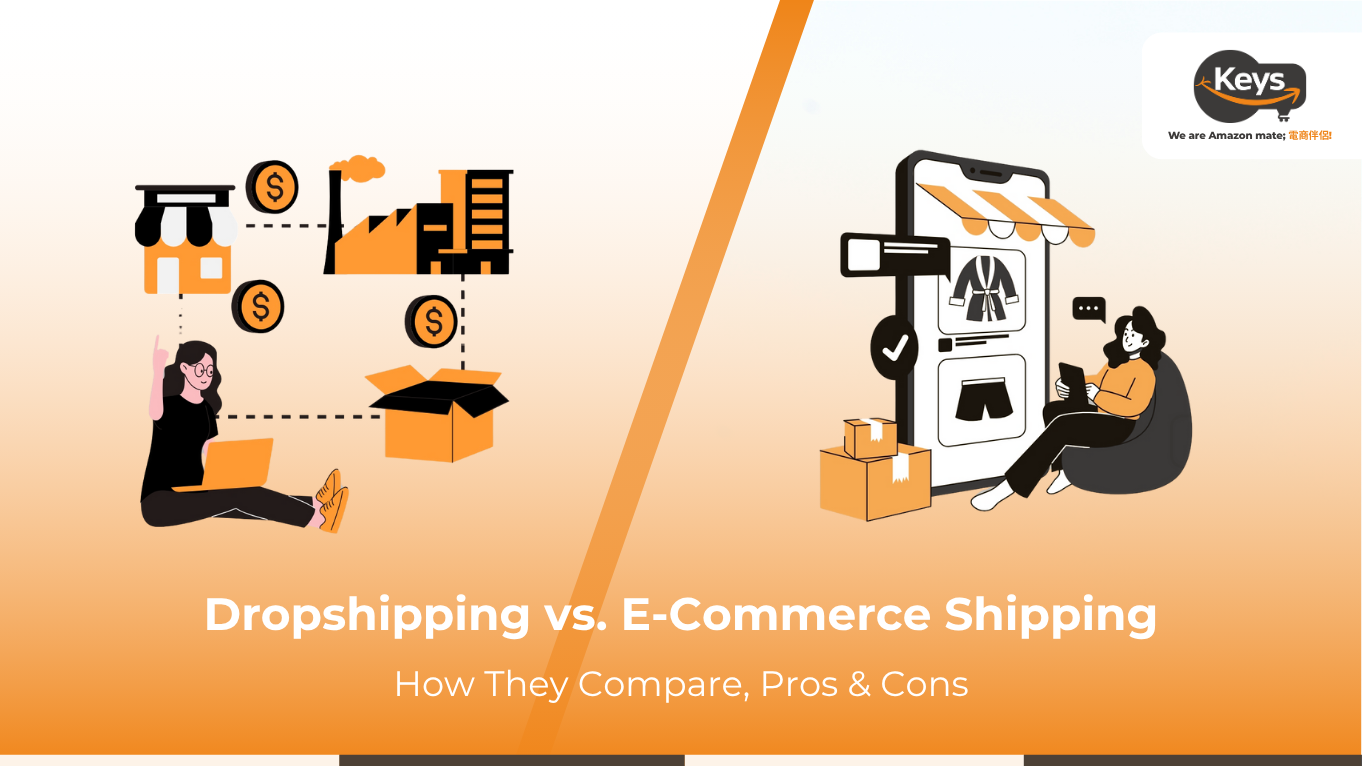Dropshipping vs. E-Commerce Shipping is a key consideration for entrepreneurs entering the online retail space. While both models offer unique paths to build a successful business, they differ greatly in inventory management, fulfillment, and scalability. Understanding these distinctions is crucial for selecting the right logistics strategy that aligns with your goals. In this guide, we’ll compare dropshipping and e-commerce shipping across core logistics functions to help you make an informed decision. Whether you seek low overhead or full control, this breakdown will clarify your next steps.
What is E-Commerce Shipping?
E-commerce shipping refers to the end-to-end process of transporting products purchased online from a seller or warehouse to the end consumer. This process encompasses several key logistics functions, including order processing, packaging, carrier selection, last-mile delivery, and tracking management.
Effective e-commerce shipping is crucial to customer satisfaction, as it directly influences delivery speed, reliability, and overall shopping experience. In today’s competitive digital landscape, businesses often rely on third-party logistics (3PL) providers or integrated fulfillment networks to optimize shipping operations, reduce costs, and scale efficiently.

What is Dropshipping?
Dropshipping is a retail fulfillment method in which an online store does not keep the products it sells in stock. Instead, when a customer places an order, the seller forwards the order details to a third-party supplier – typically a manufacturer or wholesaler – who then ships the product directly to the end customer. This model eliminates the need for inventory storage and upfront capital investment, making it an accessible entry point for e-commerce entrepreneurs.
However, dropshipping requires careful coordination with suppliers to ensure product availability, order accuracy, and timely delivery. As noted by Shopify and Oberlo, dropshipping offers low overhead and flexibility, but limits the seller’s control over product quality and shipping logistics.

What is the difference between e-commerce and drop shipping?
E-commerce and drop shipping are two popular business models in the online retail space, each with its unique characteristics and operational methods. Understanding the differences between them can help entrepreneurs choose the right approach for their business goals.
Inventory Management Practices
In traditional e-commerce, businesses typically purchase inventory in bulk and manage it themselves. This involves storing products, tracking stock levels, and fulfilling orders directly. In contrast, drop shipping allows sellers to forgo inventory management entirely, as products are shipped directly from suppliers to customers upon order placement. This significantly reduces the logistical burden on the seller.
Profit Margins Comparison
Profit margins can vary greatly between e-commerce and drop shipping. E-commerce businesses often enjoy higher profit margins because they can buy products at wholesale prices and set their retail prices accordingly. Conversely, drop shipping usually results in thinner margins since suppliers charge higher prices for their products, leaving less room for markup.

Control Over Product Quality
E-commerce businesses have direct control over product quality since they handle inventory and can inspect items before shipping. This hands-on approach helps ensure customer satisfaction. On the other hand, drop shipping relies on third-party suppliers for product quality, which can lead to inconsistencies and potential customer dissatisfaction if the supplier does not meet quality standards.
Shipping and Fulfillment Responsibilities
In e-commerce, sellers manage shipping and fulfillment, allowing them to choose carriers, negotiate rates, and control delivery times. This level of control can enhance customer satisfaction. In drop shipping, however, the supplier handles shipping, which can lead to longer delivery times and less control over the customer experience.
Branding and Customization Opportunities
E-commerce businesses have greater opportunities for branding and customization. They can create unique packaging, personalized inserts, and a tailored shopping experience that reflects their brand identity. Drop shipping, while allowing some customization of the online store, often limits branding opportunities since products are shipped in generic packaging from suppliers.
Customer Service Approach
E-commerce businesses can provide direct customer service, allowing for quick responses to inquiries and efficient handling of returns. This direct involvement can enhance customer loyalty. In contrast, drop shipping can complicate customer service, as sellers must coordinate with suppliers to resolve issues, which may lead to delays and communication challenges.

Scalability Potential
Both e-commerce and drop shipping offer scalability, but in different ways. E-commerce businesses can scale by increasing inventory and expanding product lines, which may require significant investment. Drop shipping allows for easier scalability since sellers can add new products without the need for upfront inventory costs, but they remain dependent on suppliers’ capabilities.
Level of Competition
The level of competition can differ significantly between the two models. E-commerce businesses can carve out unique niches and reduce direct competition through branding and product differentiation. In contrast, drop shipping often faces intense competition, as many sellers may source from the same suppliers, leading to price wars and thinner margins.
Dropshipping vs ecommerce: Which is better?
When comparing Dropshipping vs. E-Commerce Shipping, the better option truly depends on your business goals, resources, and long-term vision. Dropshipping is ideal for startups seeking low upfront costs and minimal operational complexity. It removes the burden of inventory management and warehousing, making it accessible for new sellers.
On the other hand, traditional e-commerce shipping gives you more control over product quality, branding, and customer experience – crucial for building a strong brand and higher profit margins over time. While dropshipping offers flexibility and ease of entry, e-commerce shipping provides scalability and better fulfillment reliability. For sustainable growth, many businesses eventually combine both models to balance risk, cost, and control effectively.

How to build an Ecommerce or Dropshipping Store
Building an e-commerce or dropshipping store can be an exciting venture, allowing you to reach customers worldwide without the need for physical inventory. Here’s a step-by-step guide to help you get started.
1. Creating Your Store and Email Accounts
The first step in establishing your online presence is to create your e-commerce store. Choose a reliable e-commerce platform like Shopify, WooCommerce, or BigCommerce that suits your business needs. Once you’ve selected a platform, sign up and choose a domain name that reflects your brand. After setting up your store, create professional email accounts linked to your domain to enhance your brand’s credibility and facilitate communication with customers.
2. Configuring Your Business Settings
Next, configure your business settings to ensure smooth operations. This includes setting up your business information, such as your address, contact details, and tax settings. Make sure to define your shipping policies, including shipping rates and delivery times, which are crucial for customer satisfaction. Additionally, consider integrating tools that help manage your logistics effectively, especially when comparing “Dropshipping vs. E-Commerce Shipping” options.

3. Managing and Setting Up Your Inventory
For e-commerce stores, managing inventory is vital. If you’re using a dropshipping model, you won’t hold inventory, but you still need to keep track of product availability with your suppliers. Use inventory management software to sync stock levels and avoid overselling. For traditional e-commerce, regularly update your product listings and categorize items to enhance user experience and facilitate easier navigation for customers.
4. Setting Up Payment Methods and Shipping Fees
Setting up payment methods is essential for processing transactions smoothly. Offer a variety of payment options, including credit cards, PayPal, and other digital wallets, to cater to different customer preferences. Additionally, clearly outline your shipping fees and policies on your website. Consider offering free shipping for orders over a certain amount to encourage larger purchases, which can be a competitive advantage in the e-commerce landscape.
5. Efficiently Handling Orders
Once your store is live, focus on efficiently handling orders. Implement an order management system that automates order processing, tracking, and fulfillment. This will help you maintain a high level of customer service and satisfaction. For dropshipping, ensure that your suppliers are reliable and communicate effectively to avoid delays. Regularly review your order fulfillment processes to identify areas for improvement and enhance the overall customer experience.

In summary, understanding the strengths and limitations of each model is crucial when deciding between Dropshipping vs. E-Commerce Shipping. Dropshipping offers low-risk entry and operational ease, while e-commerce shipping allows for better branding and fulfillment control. The right choice depends on your business stage, product strategy, and long-term vision. Some sellers even find success in combining both models for greater flexibility and scalability. Evaluate your goals carefully to build a sustainable logistics foundation.
Looking to streamline your fulfillment strategy? Keys Logistics provides tailored 3PL and hybrid logistics services to support both dropshipping and e-commerce businesses. Contact us today to explore the most efficient shipping solution for your brand.












 Tiếng Việt
Tiếng Việt 中文 (中国)
中文 (中国)

